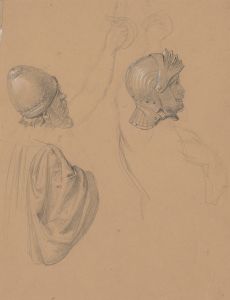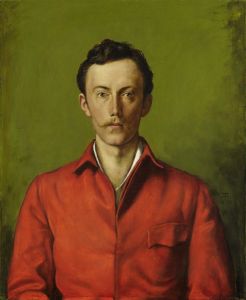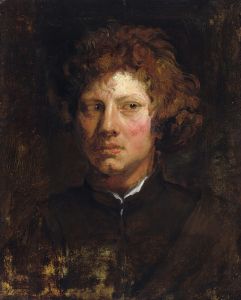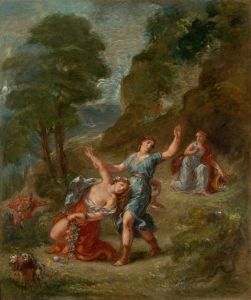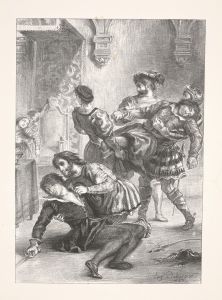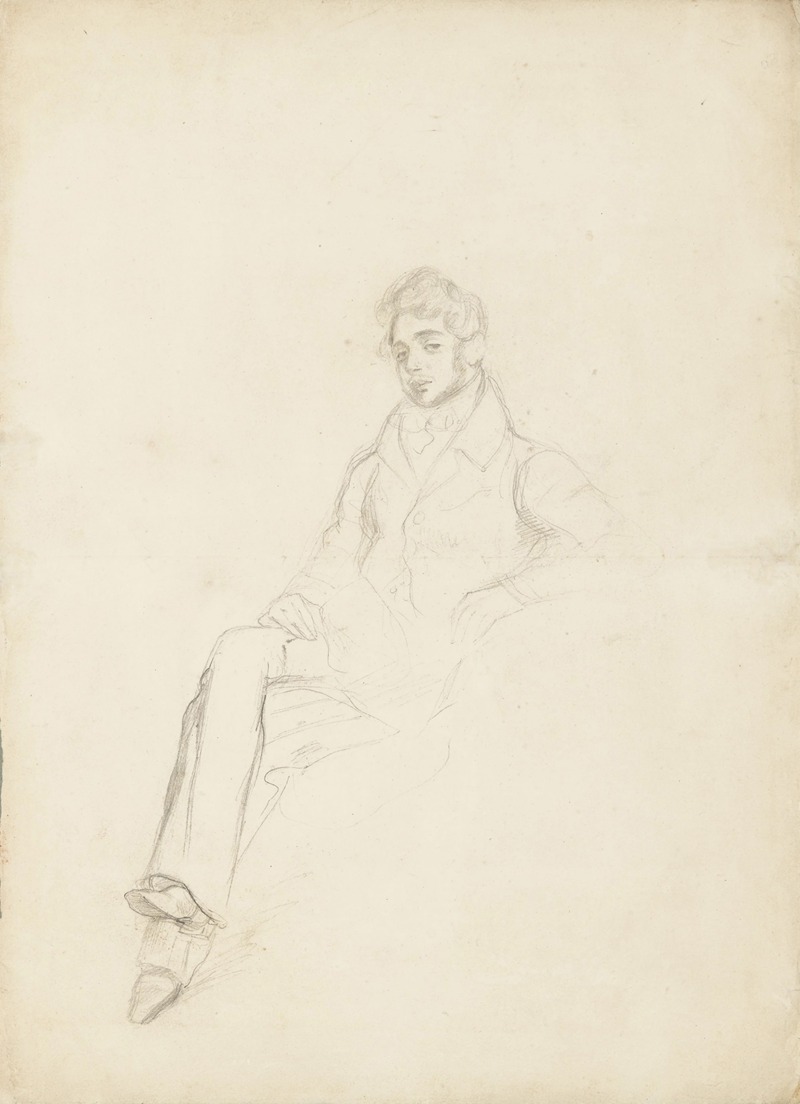
Etude pour le portrait du comte Demidoff
A hand-painted replica of Eugène Delacroix’s masterpiece Etude pour le portrait du comte Demidoff, meticulously crafted by professional artists to capture the true essence of the original. Each piece is created with museum-quality canvas and rare mineral pigments, carefully painted by experienced artists with delicate brushstrokes and rich, layered colors to perfectly recreate the texture of the original artwork. Unlike machine-printed reproductions, this hand-painted version brings the painting to life, infused with the artist’s emotions and skill in every stroke. Whether for personal collection or home decoration, it instantly elevates the artistic atmosphere of any space.
Eugène Delacroix, a leading figure of the French Romantic movement, is renowned for his expressive brushwork and vibrant use of color. Among his many works, "Etude pour le portrait du comte Demidoff" stands out as a testament to his skill in portraiture. This painting is a study for a portrait of Count Anatoly Nikolaievich Demidoff, a prominent Russian industrialist and art patron of the 19th century. The Demidoff family was well-known for their wealth and influence, derived primarily from their extensive mining operations in the Ural Mountains.
Delacroix's connection with the Demidoff family highlights the intersection of art and patronage during this period. Count Demidoff was an avid supporter of the arts, and his patronage extended to many artists of his time, including Delacroix. This relationship provided Delacroix with the opportunity to create works that captured the essence of his subjects while also allowing him to explore his artistic interests.
"Etude pour le portrait du comte Demidoff" is a preparatory study, which means it was likely created as a preliminary work to help Delacroix plan the composition and details of the final portrait. Such studies were common practice among artists, allowing them to experiment with different poses, lighting, and expressions before committing to the final version. This particular study would have helped Delacroix understand the character and demeanor of Count Demidoff, ensuring that the final portrait accurately reflected the count's personality and status.
Delacroix's technique in this study is indicative of his broader style, characterized by dynamic compositions and a keen attention to detail. His use of color and light would have been carefully considered to convey the count's stature and presence. Although the study itself may not be as polished as a finished portrait, it provides valuable insight into Delacroix's creative process and his approach to capturing the likeness of his subjects.
The relationship between Delacroix and Demidoff also underscores the cultural exchanges between France and Russia during the 19th century. As an influential figure, Demidoff's support of French artists like Delacroix helped to foster a cross-cultural dialogue that enriched the artistic landscapes of both countries. This exchange was part of a broader trend during the era, where European aristocrats often commissioned works from foreign artists, thereby promoting a diverse and interconnected art world.
While the final portrait of Count Demidoff by Delacroix may not be as widely recognized as some of his other works, the study remains an important piece within the artist's oeuvre. It exemplifies Delacroix's ability to blend his romantic sensibilities with the demands of portraiture, capturing not just the physical likeness of his subjects but also their inner character.
In summary, "Etude pour le portrait du comte Demidoff" by Eugène Delacroix is a significant work that reflects the artist's mastery of portraiture and his engagement with prominent patrons of his time. Through this study, Delacroix not only prepared for a larger work but also contributed to the rich tapestry of 19th-century art, marked by its vibrant exchanges and collaborations across Europe.






